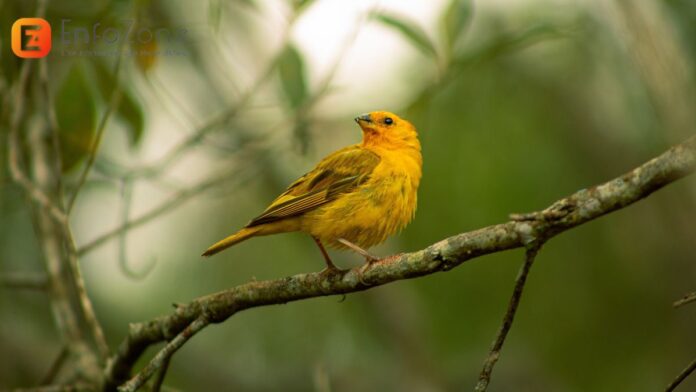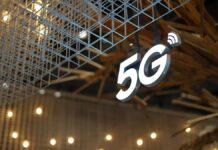The 5G network, while heralded for its unparalleled connectivity and speeds, raises concerns about its potential impact on birds. Some fear that the increased electromagnetic fields may interfere with avian navigation systems that rely on Earth’s natural magnetic fields. Additionally, the infrastructure required for 5G, including more towers, could disrupt habitats and increase collision risks for birds. While definitive research is ongoing, these potential disadvantages underscore the importance of evaluating the ecological implications of our technological advancements.
The arrival of the 5G network is hailed as the dawn of a new digital age. With unparalleled speeds and connectivity, it promises to redefine our world and how we interact with technology. However, every revolution comes with its concerns. As corporate leaders, environmentalists, and scientists, we must evaluate the holistic implications of our advancements. One of the discussions surrounding 5G deployment pertains to its potential impact on birds. This article delves into this subject, aiming to present a balanced perspective.
1. Radiation Concerns:-
Firstly, there’s the overarching concern about electromagnetic fields (EMFs) and radiation. While there’s been extensive research on the effects of radiation on humans, the data about its impact on birds is relatively scarce. It’s vital to remember that, like us, birds are bioelectrical beings. Their systems operate using intricate electrical signals.
Some preliminary studies have hinted at potential behavioral changes in birds exposed to EMFs. However, it’s essential to recognize the difference between laboratory-induced exposures and real-world scenarios where multiple factors come into play. To date, there’s no definitive evidence suggesting that 5G-compliant radiation levels harm birds. But the dearth of conclusive research itself is a call for more studies.
2. Interference with Navigation:-
Birds are master navigators. Their migratory patterns are one of nature’s wonders. They use the Earth’s natural magnetic fields to find their way across continents. There’s speculation, grounded in science, that increased levels of artificial EMFs might interfere with this innate compass.
Birds have specialized cells loaded with magnetite (a magnetic mineral) that help them sense the Earth’s magnetic fields. The concern is whether the EMFs from 5G networks could confuse these internal compasses, leading to misnavigation. While conclusive evidence is lacking, it’s an area deserving closer attention.
3. Ecosystem Disruption:-
5G networks require a denser infrastructure, leading to more cell towers and equipment installations. This can cause direct habitat loss, fragment natural landscapes, and introduce greater human activity into previously undisturbed areas. Additionally, there’s concern that the increased electromagnetic waves might interfere with the natural behaviors of certain wildlife, especially species like birds and bees that use Earth’s magnetic fields for navigation. Thus, 5G’s expansion could inadvertently disrupt ecosystems.
The infrastructural demands of 5G are immense. Unlike its predecessors, 5G demands a higher density of towers to function efficiently. This densification could lead to habitat disruption. While a tower in itself might not be problematic, the associated infrastructural changes – roads, maintenance activities, human interference – can disrupt local ecosystems.
4. Collision Hazards:-
5G networks necessitate a higher density of cell towers and infrastructure. The proliferation of these towers, especially in regions where they were previously sparse, poses a potential collision risk for birds, particularly migrating species that travel vast distances, often at night. The added infrastructure can become unexpected obstacles in their flight paths, increasing the chances of fatal collisions. Thus, the expansion of 5G can inadvertently contribute to avian collision hazards.
With increased infrastructure comes the increased risk of bird collisions. Nocturnal migrants, especially, could face challenges. While one might argue that birds face similar threats from existing structures like skyscrapers, the addition of new towers only adds to the existing problem.
5. Heat Emission:-
Electronic devices emit heat. There’s a concern about whether 5G antennas, especially when densely packed, might increase local temperatures, deterring birds from nesting nearby. While the heat rise might be minimal and localized, delicate ecosystems, where small temperature changes can have cascading effects, might be vulnerable.
5G technology, like other electronic systems, produces heat when in operation. The need for a denser infrastructure with 5G means more antennas and equipment are clustered closely. This concentration can result in localized areas of increased heat emission. While individual 5G equipment’s heat might be minimal, the collective effect from multiple devices in close proximity can lead to noticeable temperature rises, which might affect surrounding environments and organisms sensitive to temperature fluctuations.
6. Environmental Aesthetics and Fragmentation
There’s also the matter of aesthetics and environmental integration. Natural landscapes could be peppered with towers, changing the aesthetics of natural habitats. More subtly, this could lead to habitat fragmentation, where large continuous habitats get divided into smaller patches, potentially affecting bird populations and other wildlife.
5G’s demand for a denser infrastructure introduces more towers and equipment into landscapes, potentially altering the natural aesthetics of an environment. This can disrupt the visual harmony of a region, making it less appealing or natural to observers. Moreover, the installation of such infrastructure might lead to habitat fragmentation, where previously continuous habitats are divided into smaller, isolated patches. This can hinder wildlife movement, breeding, and access to resources, affecting the overall health of an ecosystem.
The 5G network’s potential disadvantages for birds are still a topic under exploration. While the promise of connectivity and digital evolution is alluring, it’s our corporate responsibility to ensure sustainable growth. The potential effects on birds serve as a reminder of the broader ecological implications of our technological advancements.
As we tread on this path of progress, it’s crucial to move forward hand-in-hand with nature, ensuring that the digital age is not just for humans but respects all life forms. Continuing research, proactive environmental assessments, and technological innovations that factor in these concerns will be key to a harmonious future.
As corporate stewards, let’s remain committed to understanding, learning, and evolving, ensuring that our digital footprints leave no adverse mark on the natural world.



















